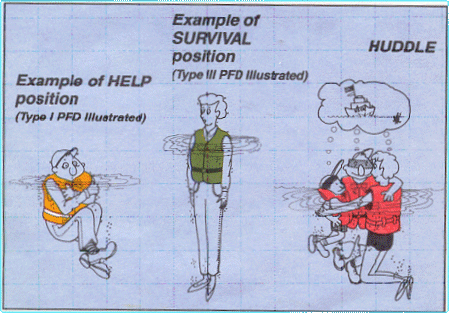Safety: Drowning Prevention
Drowning Prevention
If you are fearful of water, you know you will never go near it without being prepared. So even before you take swimming lessons, my friends, you can and must drown-proof yourself and your family. Then go and enjoy.
Water safety tips for all ages
If a child is swimming or playing near the water, an adult – who must know how to swim – must be within arm’s reach and watching at all times. No reading, chatting on the phone or drinking alcohol for you, dear adult. But keep the phone handy.
Buddy up: Always swim with another decent swimmer. Always have someone on land close by and watching you. Go ahead and swim, knowing that you are being watched over.
Air-filled water toys such as water wings, mattresses and other plastic inflatables are not life preservers! They are toys only, and are made to deflate. Empty them of air when playtime ends.
Pool toys belong in a pool’s shallow end for non-swimmers to safely play with them, wearing their PFDs, of course. Empty pools should never have tempting toys in or near them.
All pools and spas need a 5-foot fence around all sides. Chain-link fences are too easy for kids to climb, but if you must have one, make sure the diamond shape is much smaller than 2 inches wide.
Pool gate latches must be taller than a child (54 inches from the bottom of the gate), and must self-close and self-latch. No chairs or other furniture near the fence for climbing.
Large, inflatable, above-ground pools have become popular in backyards. If children lean against the soft side of an inflatable pool, they could fall in. It is essential that these inflatable pools be surrounded by an appropriate fence, the same as any permanent pool, so that children can’t climb into them.
How deep is that pool? The American Red Cross recommends at least 9 feet of depth for diving or jumping in. This means that above-ground pools can’t be dived into. Safest still, just ease yourself in feet first from the pool edge from a sitting position, even if you can see the bottom.
All pools and spas need a 5-foot fence around all sides.
Eating or chewing gum: a choking hazard during water activities. Wait till you get out of the pool and water play is over.
No drug or alcohol use before or during swimming, boating or water skiing. Teenagers especially need to learn about the dangers of alcohol and water sports.
Leave the water when you feel chilly. If your fingers and toes look blue or feel numb, it could mean the onset of hypothermia. GET THEM WARM NOW. Cover them with a blanket, towel, dry clothing, even a newspaper to warm them.
When on a boat for sailing, fishing or other water activities, you and all your family members must wear a Coast Guard-approved personal floatation device (PFD) or life jacket. You already know how to swim? Good for you. But why risk any surprises? According to the US Coast Guard, 9 out of 10 drownings occur in inland waters, most within a few feet of safety. The PFD is required in many states for good solid safety reasons. So please put yours on. Try a Type 3 style. The correct fit of a life jacket is vital, especially for a child.
More about choosing a personal floatation device here: http://www.uscg.mil/hq/cg5/cg5214/pfdselection.asp
Read about cold-water survival tips here: http://www.uscg.mil/hq/cg5/cg5214/pfdselection.asp#coldwater
Know how to use cardiopulmonary resuscitation (CPR).
Of course, you and your family will be taking swimming lessons!
More water safety resources
CDC Protect the Ones You Love: Child Injuries are Preventable: Drownings
http://www.cdc.gov/safechild/Drowning/index.html
CDC Water-related Injuries Resources
http://www.cdc.gov/homeandrecreationalsafety/water-safety
The American Academy of Pediatrics Injury Prevention Program
http://www.aap.org/en-us/about-the-aap/aap-press-room/news-features-and-safety-tips/pages/Sun-and-Water-Safety-Tips.aspx
Your baby can learn Infant Self-Rescue
http://www.safeswims.com
Pool Safety Guide for all Ages
http://www.poolcenter.com/safety
The American Academy of Pediatrics: Swimming Pool Safety for Children
http://www.healthychildren.org/English/safety-prevention/at-play/pages/Swimming-Pool-Safety.aspx
The Adventures of Splish and Splash (an interactive pool safety game for children)
http://www.poolsafely.gov/parents-families/for-kids/adventures-splish-splash
(Thanks to Heather Pierce for the last 3 listings.)



